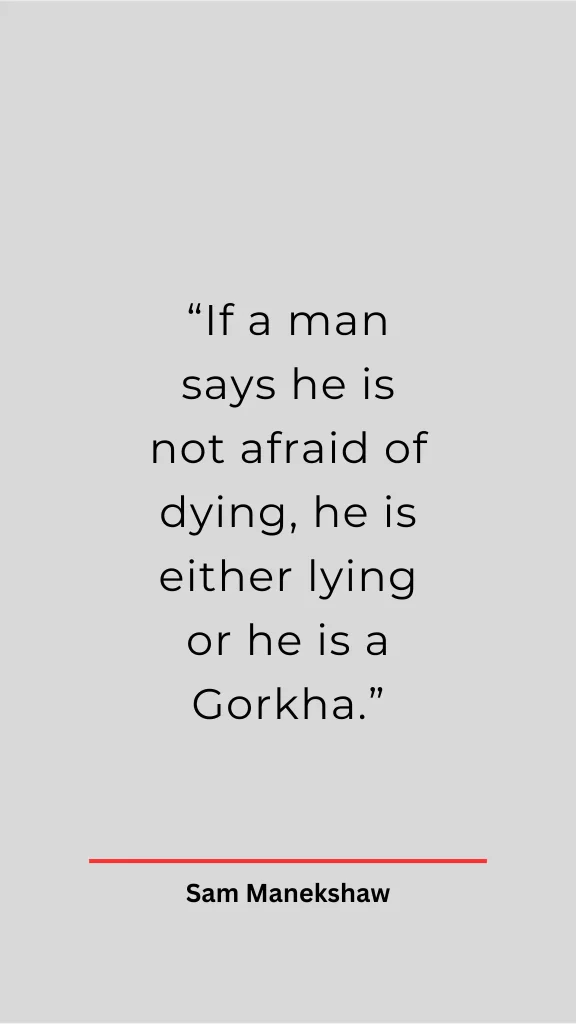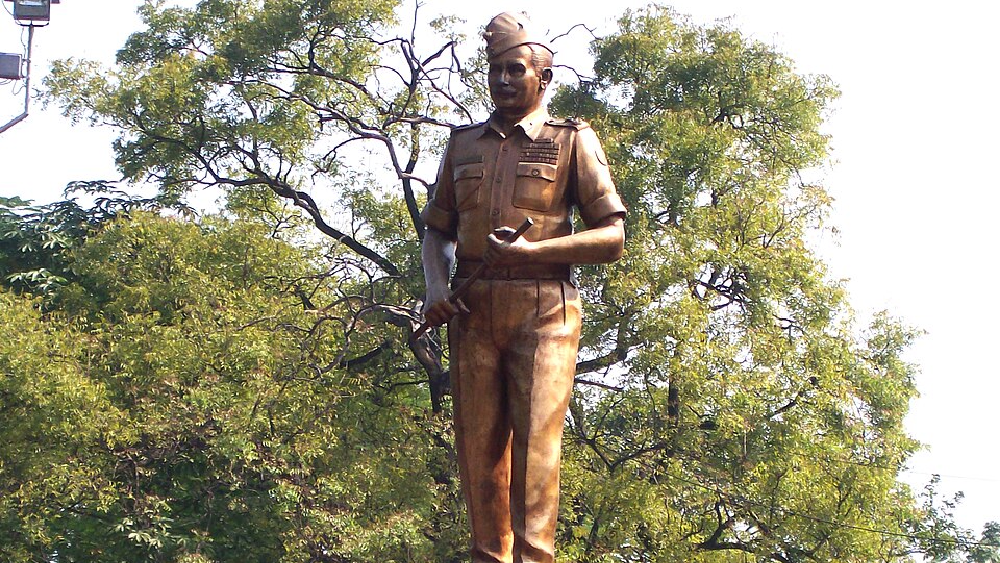Few military leaders have left a legacy as enduring and inspiring as Field Marshal Sam Hormusji Framji Jamshedji Manekshaw, fondly remembered as Sam Bahadur. Fearless, sharp-witted, and deeply devoted to his troops, Manekshaw’s life is an extraordinary story of courage, resilience, and unmatched leadership. From the battlefields of Burma in World War II to steering India to victory in the 1971 Bangladesh Liberation War, he helped define the spirit and strength of the Indian Army for generations to come.
A Childhood That Forged a Future Commander
Born on 3 April 1914 in Amritsar, Sam Manekshaw grew up in a lively Parsi family. His father, a doctor, had served in the British Indian Army during World War I, and young Sam inherited the same sense of discipline and adventure. After excelling at Sherwood College in Nainital, Sam dreamed of studying medicine in London—but destiny had a different plan.
When his father refused to send him abroad, Sam rebelled by applying for the very first entrance exam of the newly formed Indian Military Academy (IMA). He not only got in but ranked sixth in merit, becoming part of the iconic first batch known as “The Pioneers.”
The Making of a Soldier: Days at the Indian Military Academy
As one of the very first cadets of the IMA, Sam quickly stood out—not only for his abilities but also for his spirit. Tales of his humour, bravery, and occasional rule-breaking became part of Academy folklore. Though nearly suspended once for returning late from a holiday, he still emerged as one of the most promising officers of the batch.
Commissioned in 1935, he joined the Frontier Force Regiment, marking the beginning of a long and eventful military journey that would span over four decades.
Into the Fire: The Burma Campaign and a Near-Death Experience
World War II placed Sam right in the centre of fierce combat in Burma. It was here, during the Battle of Pagoda Hill, that he displayed exceptional bravery. Leading a counterattack despite heavy enemy fire, he inspired his men to reclaim a crucial position.
He was severely wounded—shot in the stomach—but still managed to joke with the Australian surgeon, claiming he was merely “kicked by a mule.” His humour, even in agony, impressed the doctor so much that he decided to operate, saving Sam’s life. For this act of extraordinary gallantry, Manekshaw was awarded the Military Cross, one of the highest honours for bravery.
Navigating the Turbulence of Post-Independence India
After India gained independence in 1947, Manekshaw’s regiment became part of the Pakistan Army, prompting his reassignment to the 8th Gorkha Rifles—a relationship that would go on to define his military identity.
When Pakistan-backed forces invaded Kashmir in 1947, Sam played a critical role in briefing India’s top leadership and planning operations that secured Srinagar. Although he never commanded a battalion due to his involvement in operational planning and emergencies, Manekshaw rose steadily through the ranks because of his skill, discipline, and clarity of thought.
By the 1950s, he had become one of the Indian Army’s most respected training and operational leaders, modernising military instruction and rewriting outdated manuals.
Against All Odds: Overcoming Politics and False Accusations
Manekshaw’s career could easily have been derailed in 1961 when he was falsely accused of disloyalty and sedition—a politically driven attempt to remove him. A court of inquiry later cleared him of all charges, but the timing meant he missed active involvement in the 1962 Sino-Indian War.
After the war, Prime Minister Nehru personally asked him to command IV Corps, where Sam quickly rebuilt morale, restored discipline, and reorganised a demoralised army unit that had suffered a crushing defeat. His leadership ensured India regained confidence along the Himalayan front.
Standing Tall Against China: The 1967 Nathu La Victory
One of the defining moments in India’s post-war recovery came in 1967, during the Nathu La and Cho La clashes with China. When Chinese forces attempted to seize strategic posts in Sikkim, Manekshaw supported Major General Sagat Singh’s bold decision to stand firm rather than retreat.
His famous line echoed across the command: “Gentlemen, I will tell you how to deal with this.”
The result? India’s first military victory against China.
This restored confidence in the army and showcased Sam Bahadur’s strategic brilliance.

Leading India to Victory: The Architect of the 1971 War
In 1969, Manekshaw became the Chief of Army Staff, and just two years later, he faced his greatest challenge: the humanitarian and political crisis in East Pakistan, which escalated into the Bangladesh Liberation War.
When Prime Minister Indira Gandhi asked if the army was ready for immediate action, Manekshaw famously refused—not out of fear, but because he knew victory required preparation. He spoke with honesty and authority, laying out the risks of moving prematurely.
Gandhi trusted him.
With months of strategic planning, training, and coordination, the Indian Army launched one of the most successful military operations in modern history. In just 13 days, India secured a decisive victory, leading to the creation of Bangladesh.
For his exemplary leadership, Manekshaw was honoured with the Padma Vibhushan, and in 1973, he became India’s first Field Marshal.
A Retirement as Grand as His Legacy
Sam Manekshaw retired from service on 15 January 1973, a date now celebrated annually as Army Day. He spent his later years quietly in Coonoor, Tamil Nadu, staying away from politics and public attention. He passed away on 27 June 2008, leaving behind a legacy that continues to inspire leaders, soldiers, and citizens alike.
Why Sam Manekshaw’s Legacy Still Matters
Sam Bahadur wasn’t just a soldier—he was a symbol of courage, wit, discipline, and humanity. His leadership style emphasized trust, honesty, and the belief that an army’s true strength lies in its people.
From rebuilding a defeated corps to delivering India’s greatest military victory, Manekshaw exemplified what it means to lead with clarity, compassion, and conviction.
He once said, “If a man says he is not afraid of dying, he is either lying or he is a Gorkha.” And in many ways, Sam Manekshaw embodied the same fearless spirit he admired.










